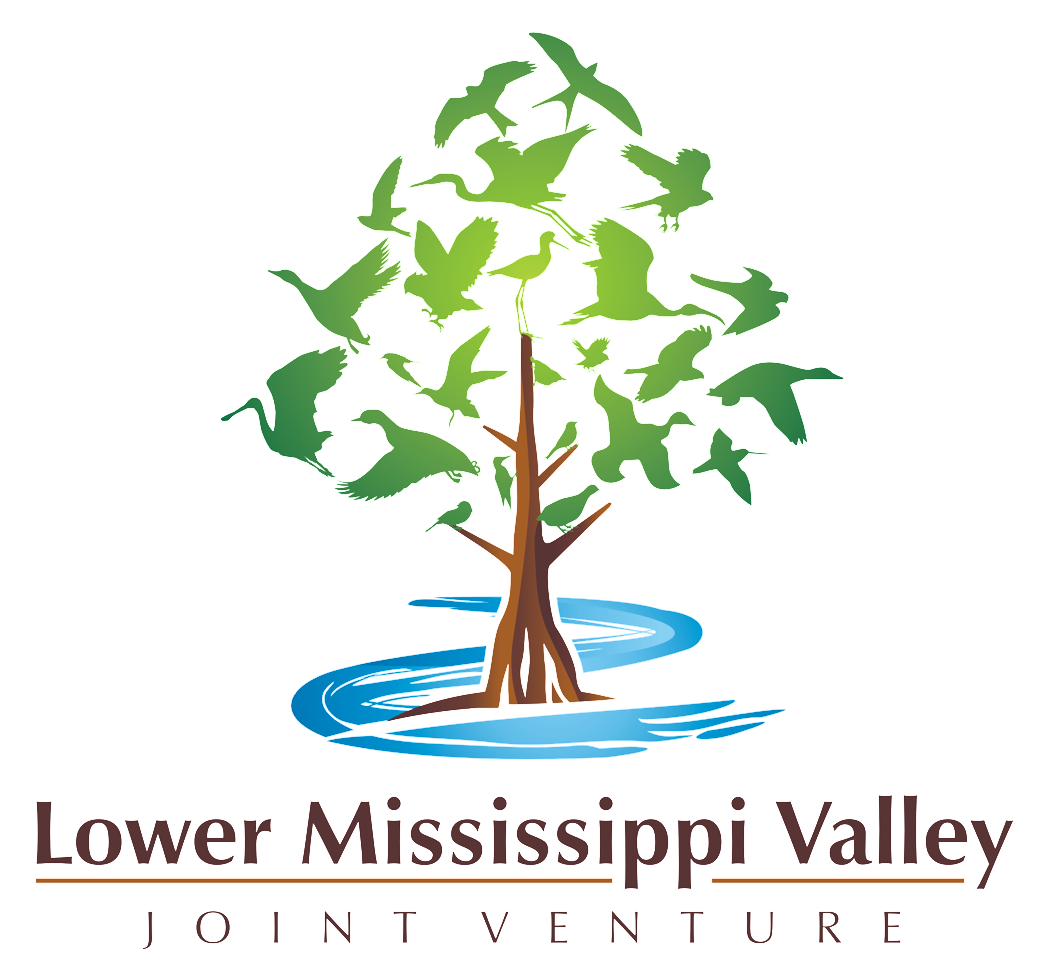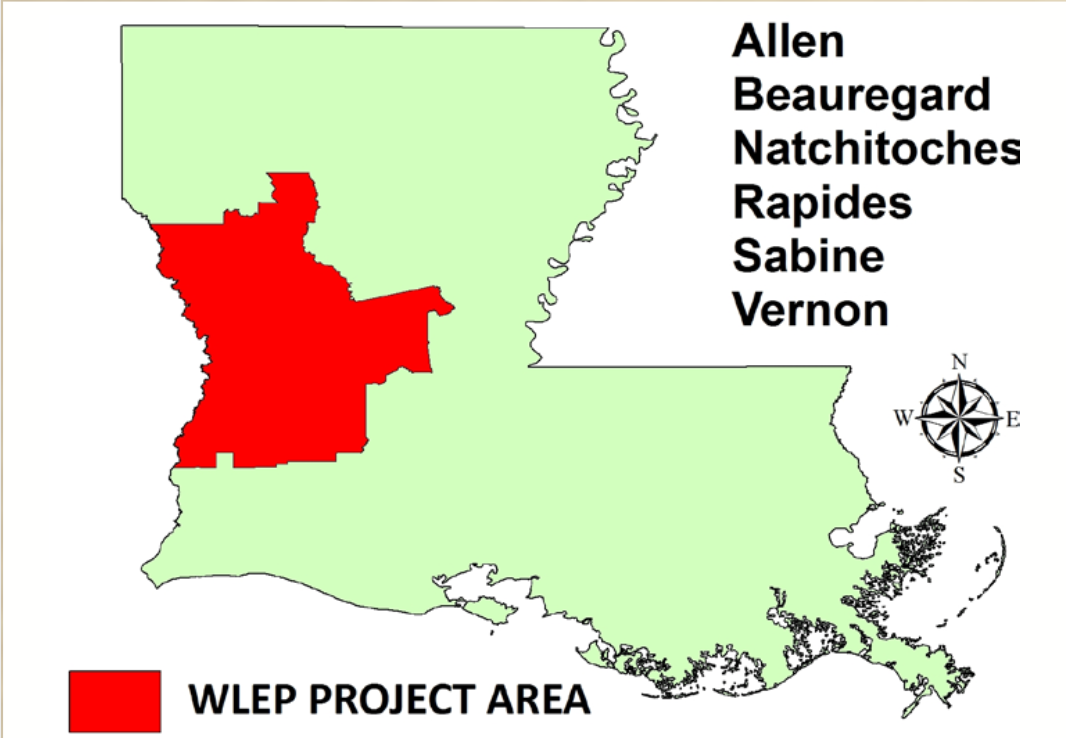West-Central Louisiana Ecosystem Partnership
Longleaf seedling photo by John S. Quarterman
The West-Central Louisiana Ecosystem Partnership is a multi-agency, industry, and private landowner partnership formed to provide technical assistance in restoring and managing longleaf pine and other native ecosystems in West-Central Louisiana. Longleaf pine (Pinus palustris), historically was the predominant forest type in much of the southeastern U.S., having once covered 92 million acres.
The Kisatchie National Forest, one of the largest natural landscapes in Louisiana with approximately 604,000 acres of public land, is one critical focus for WLEP. The Kisatchie has approximately 120,885 acres of existing longleaf and a long-term objective of 263,000 acres of longleaf. This equates to a restoration goal of 143,367 acres to achieve multiple objectives, such as providing Red-cockaded Woodpecker and Louisiana pine snake habitat, fuel reduction, ecosystem resilience, and watershed improvements.
History of Longleaf Pine in the South
Longleaf pine occurred on an estimated 90 million acres at its peak, dominating an estimated 60 million acres across the Southeastern U.S., probably the largest area on the continent dominated by a single tree species. By the mid-1900s, over half of that forest was gone. By 1995, only approximately 3 million acres remained, most of it in poor condition.
Fortunately, the importance of the longleaf ecosystem was realized before it was completely lost. Due to its value as a forest product and as an important wildlife habitat, efforts were started to re-establish longleaf across the Southeastern US including west-central Louisiana. Since 1995, restoration efforts have expanded longleaf pine to approximately 4 million acres.
With loss of longleaf pine and fire suppression, many of the bird species dependent upon this habitat have markedly declined. Therefore, conservation of open pine habitat is a high priority action for the Lower Mississippi Valley Joint Venture partnership, and we celebrate recent longleaf restoration successes while continuing to work toward an even brighter future.
West-Central Louisiana Ecosystem Partnership (WLEP)
The LMVJV participates as a partner in the site-based Longleaf Pine implementation teams inspired and informed by America’s Longleaf Restoration Initiative, which has developed partnerships such as the WLEP that strive to create viable Longleaf Pine ecosystems with the full spectrum of ecological, economic, and social values.
Do you live in these parishes and want to restore longleaf pine on your property? If YES, there are several partners that can provide longleaf pine technical and financial assistance.
The WLEP Technical Assistance Team was established to:
Provide technical assistance including recommendations for site preparation, planting, burning and maintaining your longleaf forest
Inform landowners/users about various cost share programs available
Assist in maintaining longleaf habitat by providing follow-up technical assistance for completed projects
Fire and Longleaf Pine
Fire is essential to promote a functioning longleaf forest and provides many benefits for the longleaf pine ecosystem and the landowner.
Inexpensive tool for managing southern pine forest
Promotes wildflower and plant diversity
Improves future wood quality by “thermal” pruning
Controls insects and disease
Creates and maintains optimal wildlife habitat
Removes woody competition
Reduces risk from wildfire damage
Our partners will provide technical assistance and direct you to programs that can help with the cost of burning your property.
For WLEP Inquiries, contact the WLEP Coordinator/staff
Dan Weber Phone: 318-560-5725; Shreveport, LA; Email: dweber@tnc.org
CC Richmond Phone: 337-491-2575; Email: crichmond@wlf.la.gov
David Breithaupt Phone: 318-473-7761; Email: dbreithaupt@wlf.la.gov
Chris Rice Phone: 318-237-5569; Email: crice@tnc.org
Brittany Perry, Phone: 318.578.2007; Email: bperry@nwtf.net
Longleaf Conservation Planning in Louisiana
Why Longleaf?
Wildlife Values
Among the most diverse ecosystems in the world
Well-maintained longleaf provides optimal wild-life habitat for turkeys, quail, deer and numerous other game and nongame species
Produces numerous plant species that provide year-round food for wildlife
Many plant and animal species can only survive in functioning longleaf forests
Clockwise from top left: Northern Bobwhite, Eastern White-tailed Deer, Wild Turkey, Prairie Warbler. Photos by James Childress
Economic/Forest Industry Values
Enhances wildlife lease values
Produces heavier logs and a higher percentage of more valuable saw logs and poles than any other pine
Produces longer length and longer lasting needles preferred for pine straw sales
Provides silvopasture opportunities for optimal livestock, forage, and timber production
Can be managed for economic and ecological benefits simultaneously
Can be managed in even-aged or uneven-aged systems
Risk-averse, tolerating fire throughout its life and minimizing catastrophic loss to insects, disease, ice and wind; strongest and most durable of all pine species
Also, learn more about the other longleaf partnership in our geography, the Texas Longleaf Team.







